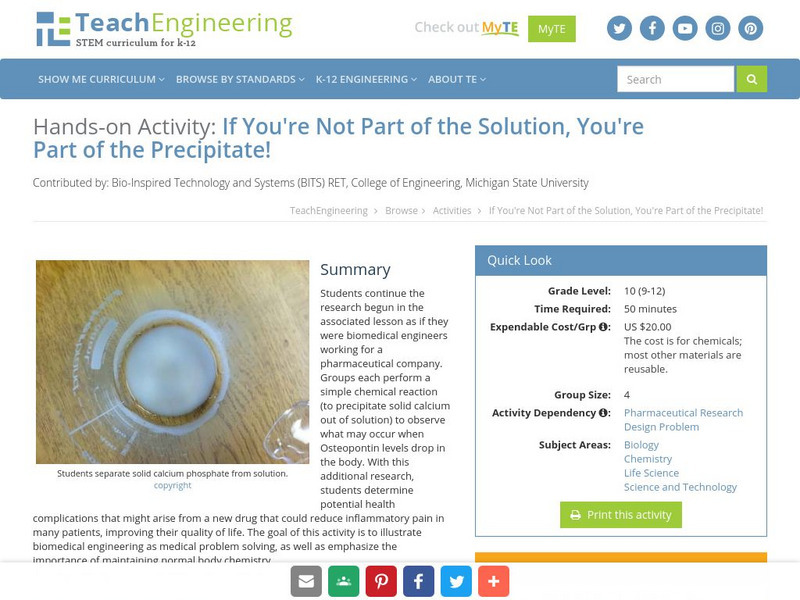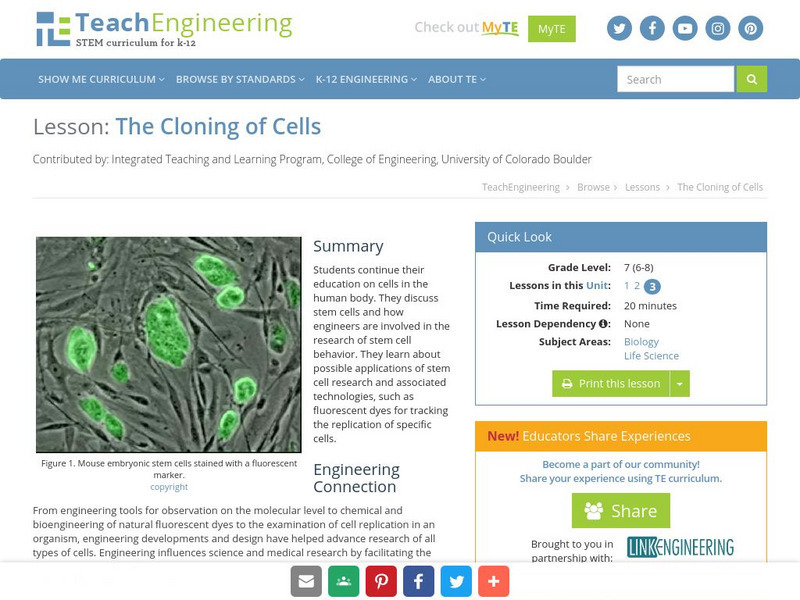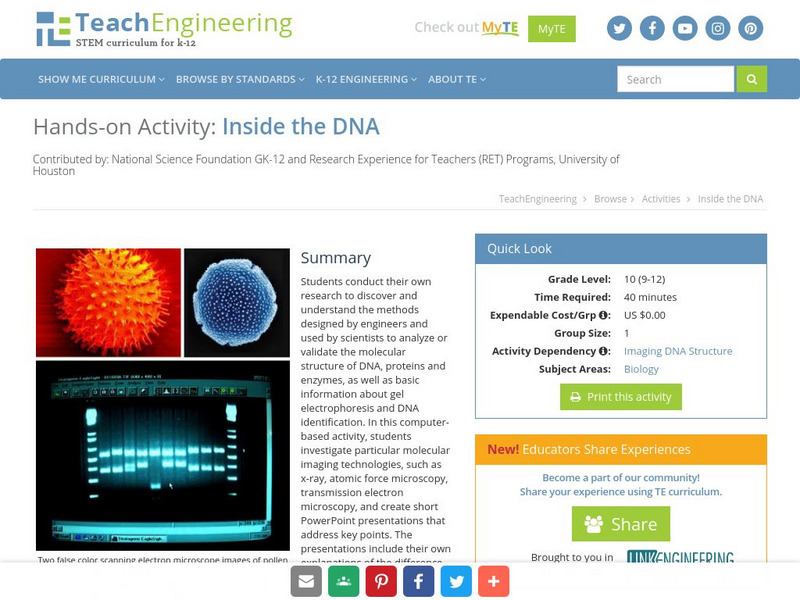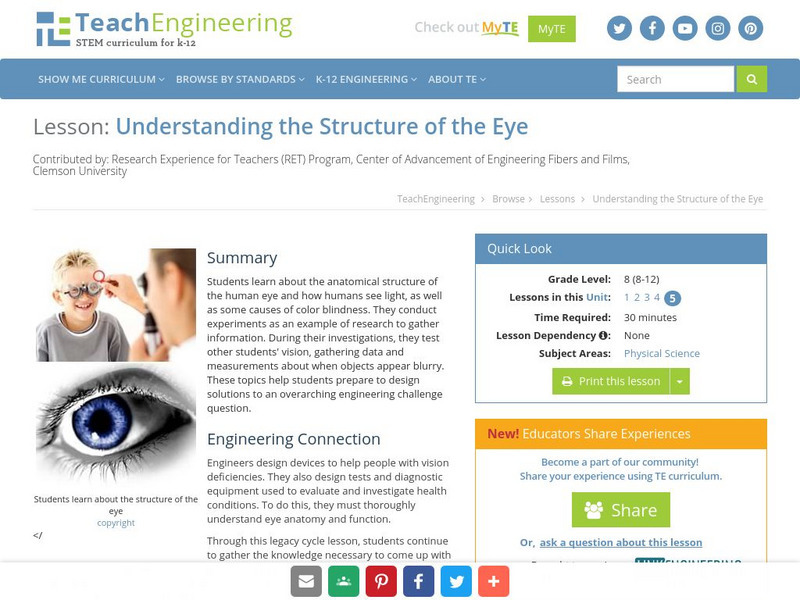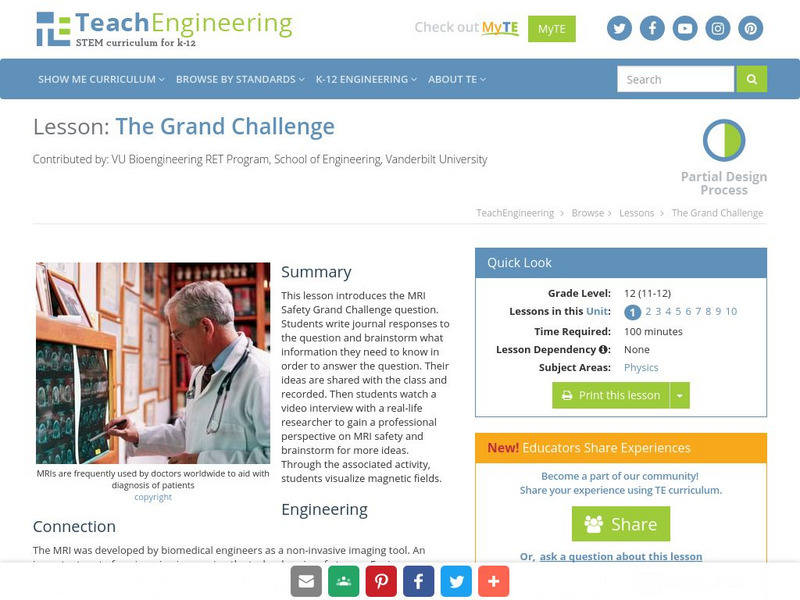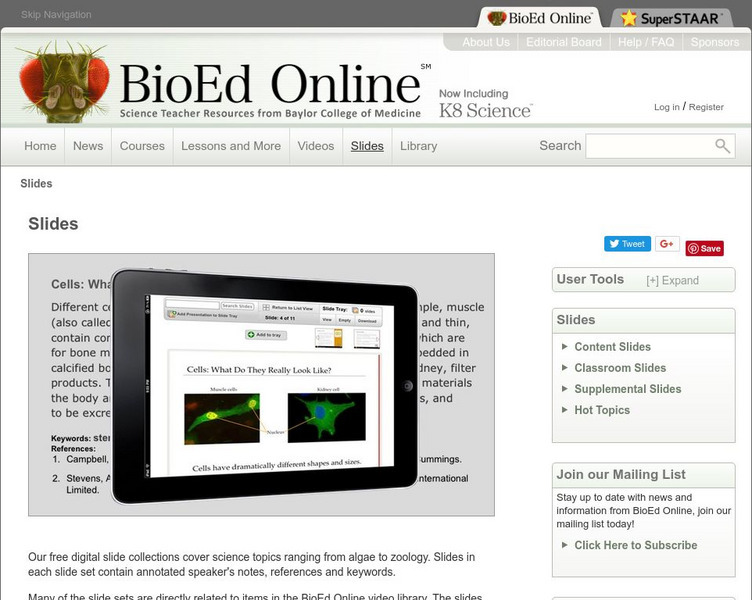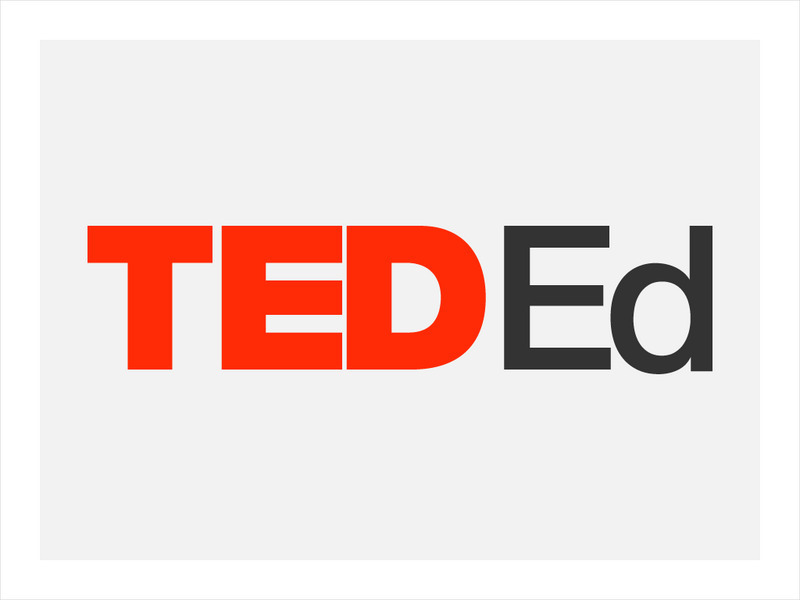American Institute of Biological Sciences
Action Bioscience: Animal Cloning, Old Mac Donald's Farm Changed
An in-depth look into the potential benefits to animal cloning. This process could provide us with food designed to help fight disease, protect endangered species, enhance livestock, and create opportunity for biomedical research.
TeachEngineering
Teach Engineering: If You're Not Part of the Solution!
Students continue the research begun in the associated lesson as if they were biomedical engineers working for a pharmaceutical company. Groups each perform a simple chemical reaction (to precipitate solid calcium out of solution) to...
National Institutes of Health
National Library of Medicine: Medline Search
Search of National Library of Medicine for all current research articles on a specific topic. Students must enter key words in the search box. Results are abstracts of research articles.
TeachEngineering
Teach Engineering: Artificial Heart Design Challenge
Students are presented with a hypothetical scenario in which they are biomedical engineers asked to design artificial hearts. Using the engineering design process as a guide, the challenge is established and students brainstorm to list...
TeachEngineering
Teach Engineering: Heart to Heart
Students learn about the form and function of the human heart through lecture, research and dissection. They brainstorm ideas that pertain to various heart conditions and organize these ideas into categories that help them research...
TeachEngineering
Teach Engineering: Glowing Flowers
Student teams learn about engineering design of green fluorescent proteins (GFPs) and their use in medical research, including stem cell research. They simulate the use of GFPs by adding fluorescent dye to water and letting a flower or...
TeachEngineering
Teach Engineering: Aging Heart Valves
In this unit, students learn about the form and function of the human heart through lecture, research and dissection. Following the steps of the Legacy Cycle, students brainstorm, research, design and present viable solutions to various...
TeachEngineering
Teach Engineering: The Cloning of Cells
Students continue their education on cells in the human body. They discuss stem cells and how engineers are involved in the research of stem cell behavior. They learn about possible applications of stem cell research and associated...
TeachEngineering
Teach Engineering: Inside the Dna
Students conduct their own research to discover and understand the methods designed by engineers and used by scientists to analyze or validate the molecular structure of DNA, proteins and enzymes, as well as basic information about gel...
TeachEngineering
Teach Engineering: What Is Going on With Grandma?
Students are introduced to the concepts of the challenge question. First independently, and then in small groups, they generate ideas for solving the grand challenge introduced in the associated lesson: Your grandmother has a fractured...
TeachEngineering
Teach Engineering: Understanding the Structure of the Eye
Students learn about the anatomical structure of the human eye and how humans see light, as well as some causes of color blindness. They conduct experiments as an example of research to gather information. During their investigations,...
TeachEngineering
Teach Engineering: Detecting Breast Cancer
This activity introduces students to their task of developing a painless means of identifying cancerous tumors. Solving the challenge will depend on an understanding of the properties of stress and strain. After being introduced to the...
TeachEngineering
Teach Engineering: It's Tiggerific!
In Lesson 3, as part of the Research and Revise step, students investigate potential energy held within springs (elastic potential energy). Class begins with a video of either spring shoes or bungee jumping. Students then move on into...
TeachEngineering
Teach Engineering: The Grand Challenge
This lesson introduces the MRI Safety Grand Challenge question. Students are asked to write journal responses to the question and brainstorm what information they will need to answer the question. The ideas are shared with the class and...
TeachEngineering
Teach Engineering: Imaging Dna Structure
Students are introduced to the latest imaging methods used to visualize molecular structures and the method of electrophoresis that is used to identify and compare genetic code (DNA). Students should already have basic knowledge of...
American Institute of Biological Sciences
Action Bioscience: For Sale: Iceland's Genetic History
Icelandic biomedical company, deCODE, owns exclusive rights to a genetic database of all Icelanders. Studying the genome of the entire population could reveal trends because Iceland is such an isolated and hardly migratory nation. As...
BioEd Online
Bio Ed Online: Stem Cell Slide Show
This ready made stem cell slide presentation contains all the pertinent information needed to give your students a clear understanding of what stem cells are, and the impact they can have on curing diseases.
University of Arizona
University of Arizona: Careers With Animals
Wide-ranging suggestions for student who love to work with animals and don't necessarily want to be a veterinarian. Site also has links to other animal career websites.
TED Talks
Ted: Ted Ed: What Are Mini Brains?
Shielded by our thick skulls and swaddled in layers of protective tissue, the human brain is extremely difficult to observe in action. Madeline Lancaster shares how to make a brain in a lab.
Science Education Resource Center at Carleton College
Serc: Animal Rights and Welfare
The relationship of animals and humans has been the subject of differing philosophical views for thousands of years. The controversy continues today in many aspects of contemporary life. Some people believe that a vegan lifestyle is the...
Cosmo Learning
Cosmo Learning: Introduction to Bioengineering
A collection of video lectures from a course introducing students to the bioengineering field. Webpage includes sixteen videos from professors at Massachusetts Institute of Technology. Lectures vary in length and include an introduction...

